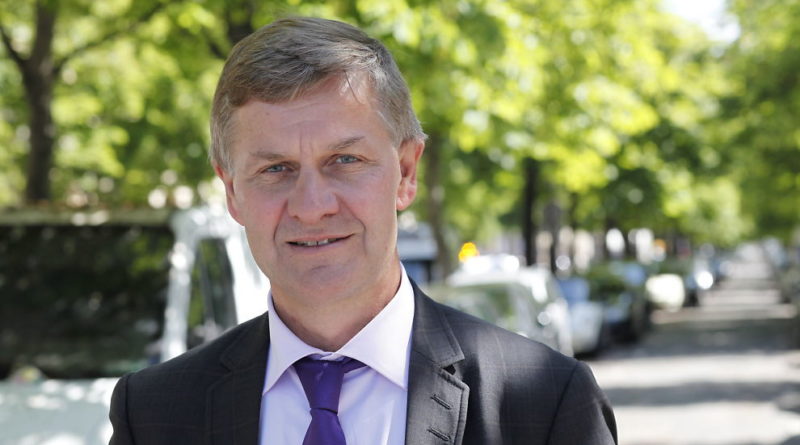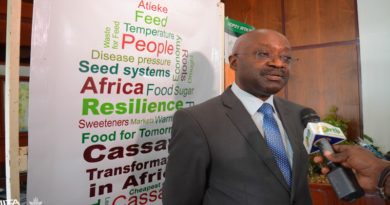Resource experts call for new strategy to build better cities
As urban areas around the world continue to grow, cities are placing an increasingly heavy burden on our environment. Policymakers should therefore treat resource efficiency as equal in importance to climate policy if they want to move towards a sustainable future, according to a new report from the International Resource Panel.
The Weight of Cities: Resource Requirements of Future Urbanization calls for a new strategy to meet the needs of 21st-century urbanization, one that would result in cities that are low carbon, resource efficient, socially just, and in which people can live healthy lives.
Unless the world’s urban areas make optimal use of their resources, cities will soon demand far more resources than our planet can sustainably provide, placing a huge burden on agriculture, energy, industry and transport. In the next 30 years, 2.4 billion people are likely to move to urban areas, bringing the proportion of the global population living in cities by 2050 to 66 per cent.
The annual amount of natural resources used by urban areas could grow from 40 billion tonnes of raw materials in 2010 to 90 billion tonnes by 2050, an increase of 125 per cent, if changes are not made to how cities are built and designed.
The report, the 25th from the International Resource Panel, an eminent group of experts set up by UN Environment in 2007 to examine natural resource use, was one of two summary reports launched at the 9th World Urban Forum in Kuala Lumpur.
“There are already far too many people around the world who are already being poisoned by breathing dirty, dangerous air in the cities they live in, and it’s alarming to see that this trend is set to worsen,” said UN Environment chief Erik Solheim.
“We can and need to do far better. We can design better cities, where people can walk or cycle instead of having to use cars, where waste is recycled rather than burned or tossed into landfills, and where everyone can access clean fuels and energy.”
Slightly more than a third of urban growth is expected to come from three countries: India (expected to contribute 404 million new city-dwellers), China (292 million) and Nigeria (212 million). At the same time, currently one in three urban residents lives in a slum or informal settlement, often without access to proper housing or basic services.
The increase in urban population will require the building of new cities and the expansion of existing ones. Building and operating these new cities, and supporting the urban lifestyles of those who live in them, requires billions of tonnes of raw materials, such as fossil fuels, sand, gravel, iron ore, wood and food.
Historically, existing cities have been spreading at a rate of two per cent a year, increasing global urban land use from just below one million square kilometres to 2.5 million in 2050, and putting agricultural land and food supplies at risk.
To achieve a transition to low-carbon, resource-efficient, socially just cities, the report recommends: Monitoring the flow of resources entering and leaving the cities to understand the local situation and to help develop resource-efficient strategies.
Planning cities to have:
Compact growth, to avoid urban sprawl and so economize on the square kilometres of asphalt, the concrete, the electricity and the water wasted in spread-out cities.
Better connections by efficient and affordable public transport (e.g., light rail, bus rapid transit).
Liveable neighbourhoods where design encourages people to walk or cycle.
Resource-efficient urban components, such as car sharing, electric vehicles and charging point networks, efficient energy, efficient waste and water systems, smart grids, cycle paths, energy-efficient buildings, new heating, cooling and lighting technology, etc.
Infrastructure for cross-sector efficiency, such as using waste heat from industry in district energy systems and industrial waste materials in construction, such as fly-ash bricks.
Establishing a new model for city governance and politics that supports imaginative business propositions and experimentation.
The second report launched on Friday, Sustainable Urban Infrastructure Transitions in the ASEAN Region: A Resource Perspective, was produced by UN Environment with scientific input from International Resource Panel member Dr Anu Ramaswami.
It examines future urbanization in the countries of the Association of Southeast Asian Nations (ASEAN) – Indonesia, the Philippines, Viet Nam, Thailand, Myanmar, Malaysia, Cambodia, Laos, Singapore and Brunei — where 205 million people are expected to move to cities by 2050, resulting in the rapid rise of 200 new small cities or urban areas with populations of fewer than 500,000. This is likely to take place against a backdrop of increasing air pollution and climate risks, and in a region where 73 million people live in slums, 120 million lack access to electricity and 280 million lack clean cooking fuels.
The report says that collaborative governance, at all levels, and long-range planning will be needed to transform the region’s cities. Strategies suggested include: Undertaking national and cross-ASEAN urbanization planning to balance economic growth across a range of city sizes and to preserve high-value agricultural land and ecosystem services.
Promoting compact, mixed-use, accessible and inclusive cities through regional and city planning to reduce land-use planning, streamline infrastructure provisions and promote sustainable mobility (such as public transport, car-sharing, walking and cycling).
Developing zero-slum cities through land-use planning that prevents slum formation and rehabilitating existing slums in resource-efficient, disaster-resistant, multistorey buildings. Promoting resource-efficient, resilient buildings and electricity grids, promoting resource efficiency at the systems level across the city through innovative and profitable exchanges of “waste” energy and materials.




